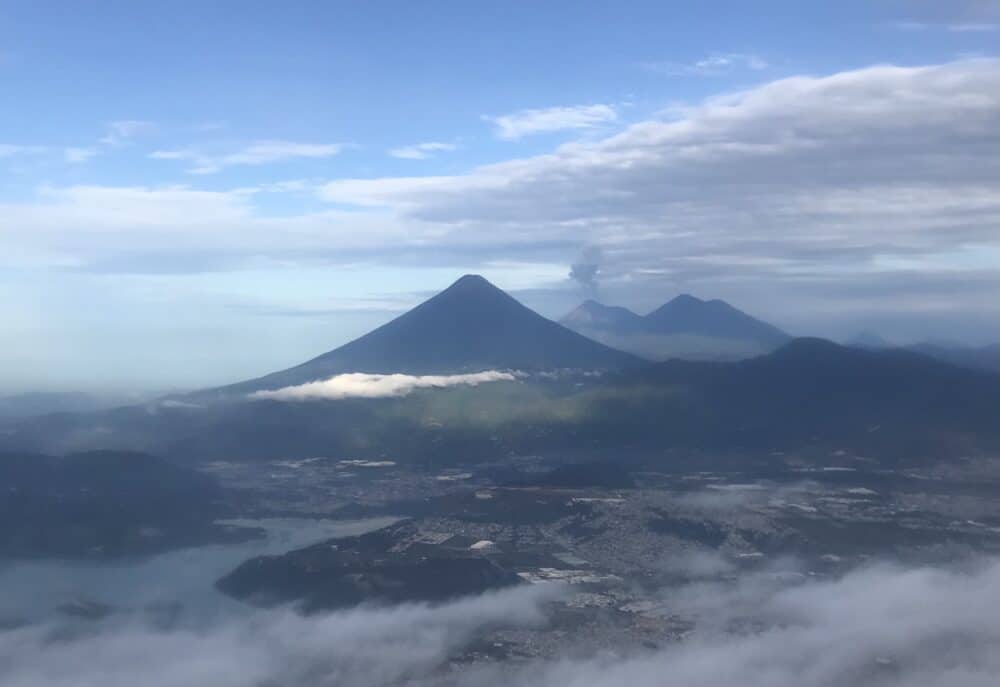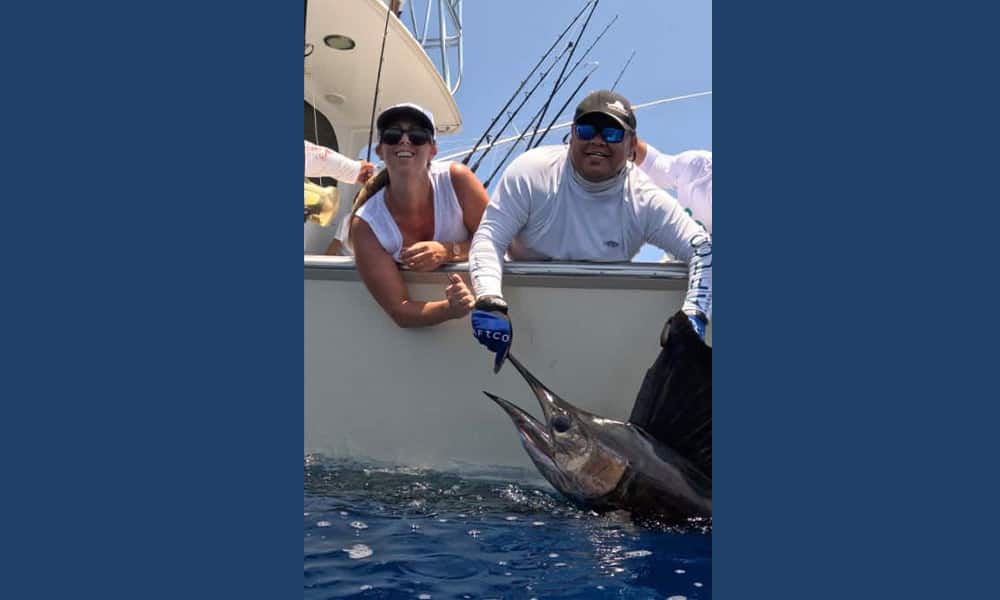I recently attended the International Game Fish Association (IGFA) regional meeting of the Central America and Caribbean councils held in Antiqua, Guatemala. All the countries were represented by members of the councils and discussed Education, Conservation, and Science projects supported by the IGFA in the various regions. The last day of the conference included a day of fishing hosted by Club Náutico of Guatemala. Since we had to travel from Antiqua, Guatemala to the coast the same day, it would be a short day.
I drew Casa Vieja’s new boat Tabasco, fishing with Dra Marina Marrari of FECOP, and Manoel Cifuentes who oversees marine research and development for the Guatemala Central America tuna industry working with artisanal fishermen´s hook and line tuna fishermen.
We got under way and the crew advised me it was August and fishing had been slow, but I fished plenty and understand some days fishing you are a a hero and other days a zero. I had fished all through Central America, Puerto Rico, and Mexico buy was finally getting to plant a fishing flag in Guatemala.
It was around 10 am when we got our first line in the water and shortly after came upon a pod of spinner dolphins, so we rigged for tuna. Shortly Dra. Marrari’s rod was doubled over with a 50-pound yellowfin tuna ripping line from the reel. We took two more tuna and then moved on.
It took about 30 minutes to raise the first sailfish but in a manner of less than 2 hours we caught and released 7 sailfish having a hook up around every 15 minutes. The crew explained it is a lot crazier in the sailfish high season.
Most all boats in Guatemala carry a 7-foot selfie stick and a go-pro type camera to get a great hero shot without lifting the fish from the water and they only will take a photo of one or two fish. This is a smart practice in a place where 20 sailfish days are common.
I was elated with the great fishing but at the same time I felt a sadness for the old days in Costa Rica when a normal day on the water would bring similar results.

Guatemala way ahead in Ocean Management and Responsible Use
Ocean management and a true understanding of the value of sport fishing by the Tourism Ministry are the reasons for the excellent fishing in Guatemala. Tuna purse sein boats can come no closer than 100 miles of the coast and there is no commercialization of sailfish allowed in the country and only catch and release fishing is legal for sailfish.
The highlight of my day was listening to Manoel Cifuentes and learning about the commercial hook and line tuna project he oversees for artisanal fishermen. The pilot program is out of just two ports, and benefits 1000 families in Buena Vista and 2000 in Puerto San Jose. Previously tuna was a bycatch of shark and dorado fishing but now they target tuna with nearly zero bycatch of other species.
Some of their challenges have been acquiring the equipment to carry out tuna fishing. Rods and reels capable of handling big tuna are expensive as well as lures, leaders, and communication equipment. More storage capacity and use of more ice was also needed.
They have solicited the government with help for registration, fishing permits, traceability, security, and infrastructure so their work is carried out in a dignified and responsible way. Just since last October the group has caught 90 tons of tuna which has been marketed mostly to restaurants and grocery chains in Guatemala.
The new tuna law passed in Costa Rica a year ago moved the tuna purse sein boats to 80 miles. It also allows for Costa Ricans with a Tourist fishing license to catch 15 tuna a day to sell during the off season. The government needs to present a management plan before it can be implemented, which they have yet to do.
Longliners in Panama have acquired a trick to increase their tuna catches. A floating object, most commonly a logor tree trunk will create its own eso-system and hold plenty of bait fish around and below it. Longliners will tie the log to the side of their boat and move at an idle why they fish. This allows the bait to move with them and when they come across a school of tuna, the tuna go in a frenzy on the bait and the longliners take advantage with hand lines taking tuna after tuna until the action stops.
Costa Rica still exploits sailfish. Even though the longliners report it is only 4% of their catch and with access to tuna they would quit fishing sailfish when tuna has recovered which it has, they don’t want to honor their word.
If they put forth a little more effort with tuna and adjust their fishing methods both Commercial and Sport Costa Rican employees and their families could thrive.
Congressman Eli Feinzaig has submitted a Bill to end the commercialization of sailfish in Costa Rica and reserve it only for catch and release sport fishing. Let’s hope it passes.
Otherwise Costa Rica will see its sport fishing customers and their dollars opting to go to other Destinations in Central America.






